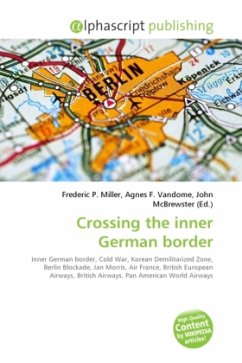Crossing the inner German border remained possible throughout the Cold War; it was never entirely sealed in the fashion of the border between the two Koreas, though there were severe restrictions on the movement of East German citizens. The post-war agreements on the governance of Berlin specified that the Western Allies were to have access to the city via defined air, road, rail and river links. This was mostly respected by the Soviets and East Germans, albeit with periodic interruptions and harassment of travellers. Even during the Berlin Blockade of 1948, supplies could be brought in by air the famous Berlin Airlift and Allied military convoys could pass through East Germany en route to Berlin. The border could be crossed legally only through a limited number of air, road, rail and river routes. Travellers to and from Denmark, Sweden, Poland and Czechoslovakia could also pass through East Germany. Access rights for non-Germans were otherwise very restricted.
Bitte wählen Sie Ihr Anliegen aus.
Rechnungen
Retourenschein anfordern
Bestellstatus
Storno








